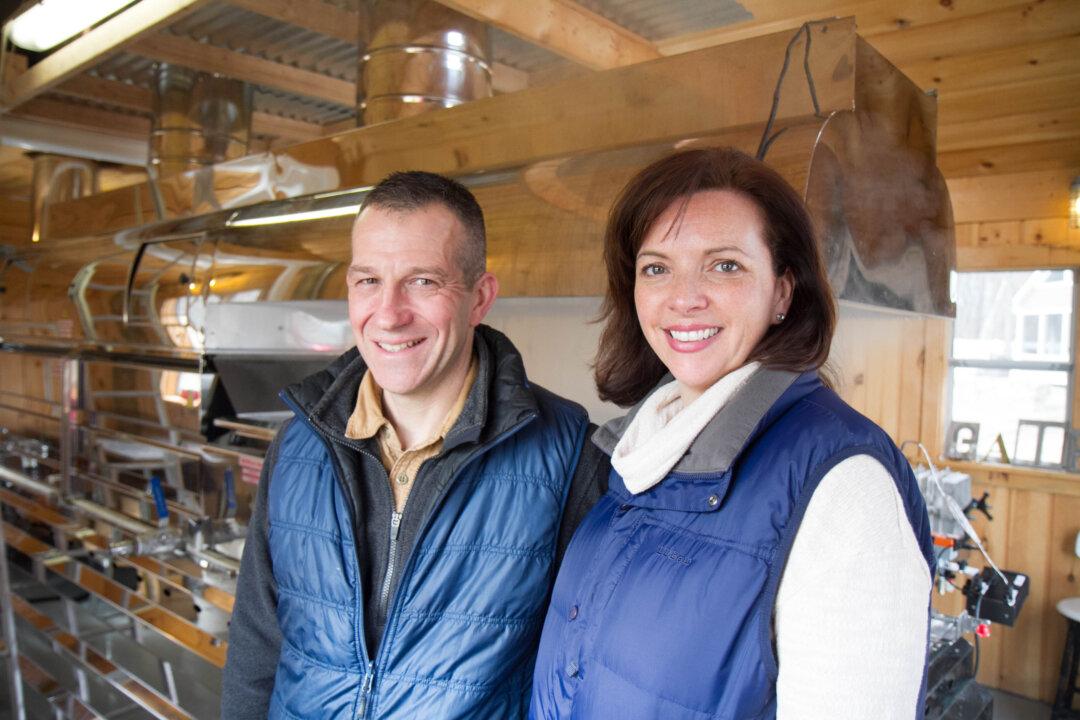GREENVILLE—There are not many farms that can say their high season is in February, but Finding Home Farms in Greenville is at its busiest production point right now, making maple syrup.
“We always say the best part is when sugaring starts and when sugaring ends,” said Dana Putnam, a co-owner of the farm and a fourth-generation maple syrup farmer.
On a Sunday afternoon in February, billows of mapley steam can be seen coming from their sugarhouse, a shed-like building right next to their home in a 13-house neighborhood on their short, .3-mile long road.
Their farm doesn’t start or end there though.
On a good day, they can process 9,000 gallons of sap.





